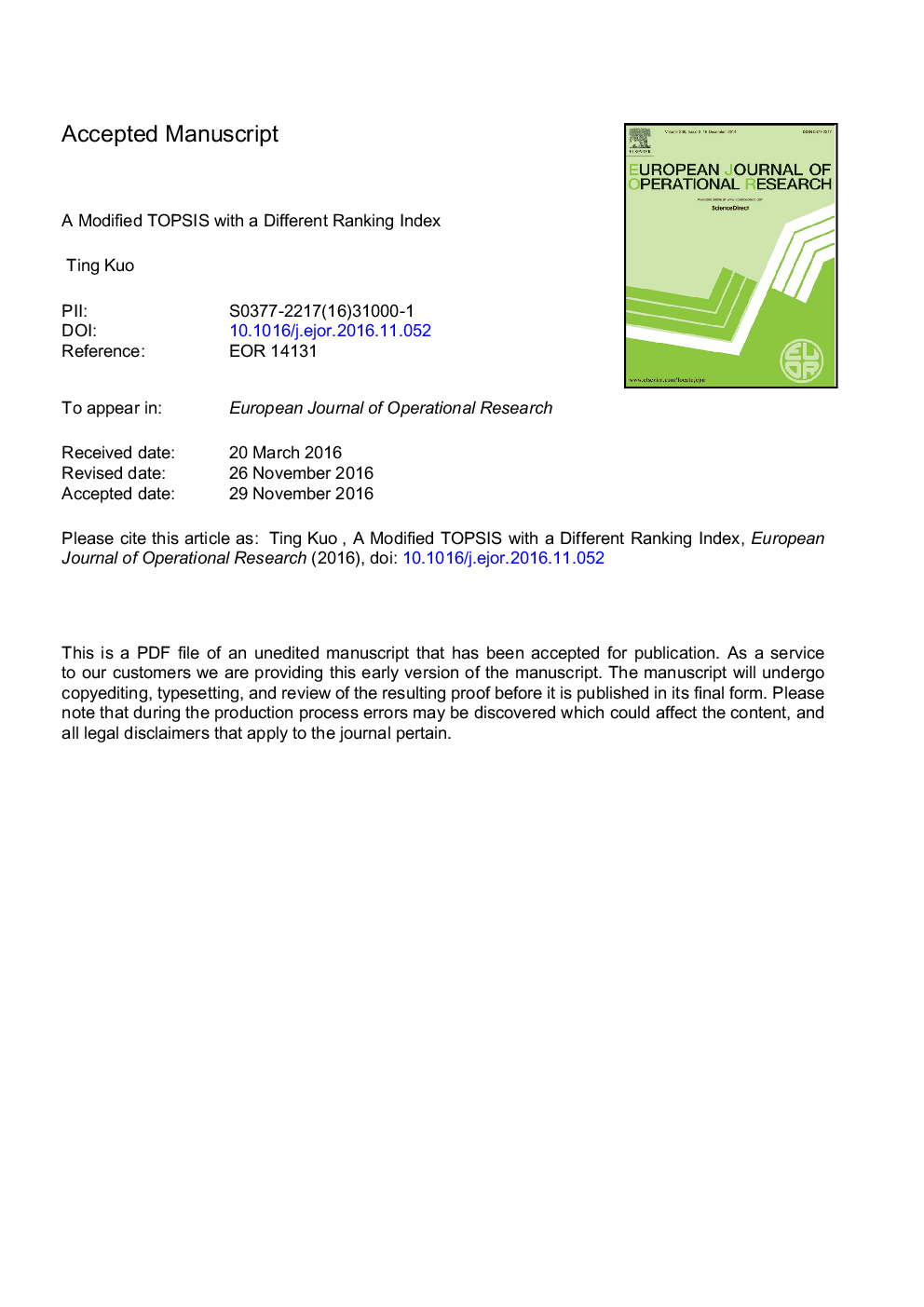| Article ID | Journal | Published Year | Pages | File Type |
|---|---|---|---|---|
| 4959885 | European Journal of Operational Research | 2017 | 36 Pages |
Abstract
As a tool for decision analysis, the TOPSIS (Technique for Order Preference by Similarity to Ideal Solution) attempts to choose alternative that should simultaneously have the closest distance from the positive ideal solution (PIS) and the farthest distance from the negative ideal solution (NIS). Although the ranking index of TOPSIS is reasonable, it contains a flaw. That is, this ranking index is irrespective of the weights of separations of an alternative from the PIS and the NIS. In other words, no matter what weights the decision-maker assigns to these two separations, the ranking results would not differ as if he has no preference for these two separations. This flaw will certainly limit the applicability of TOPSIS. By treating the separations of an alternative from the PIS and the NIS as a “cost” criterion and a “benefit” criterion, respectively, we reduced the original MCDM (Multi-Criteria Decision Making) problem to a new MCDM problem with these two criteria only. By proposing w â and w + as the weights of the “cost” criterion and the “benefit” criterion, respectively, we defined a new ranking index. Experimental results showed that if the number of alternatives exceeds two or if the relative importance of the two separations should be considered, the proposed ranking index would be a better choice. Finally, two numerical examples of a real-life case are given for illustration. In summary, the proposed ranking index is intelligible and intrinsically superior to the original ranking index in seeking compromised solutions.
Related Topics
Physical Sciences and Engineering
Computer Science
Computer Science (General)
Authors
Kuo Ting,
